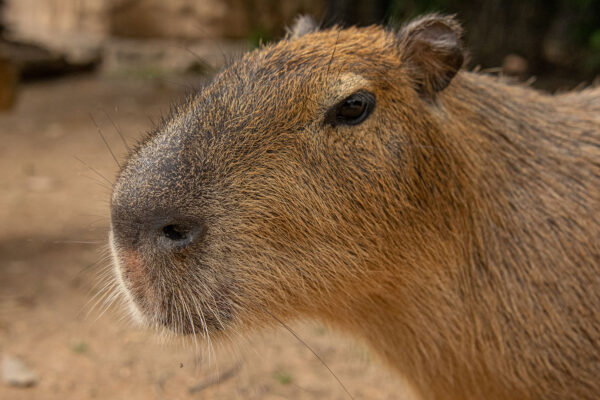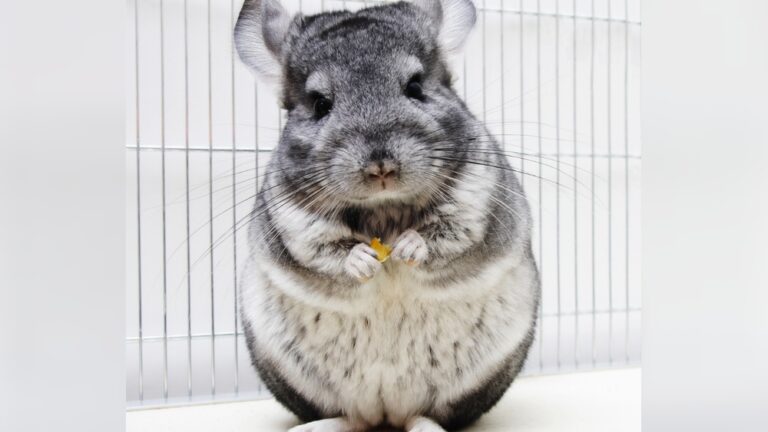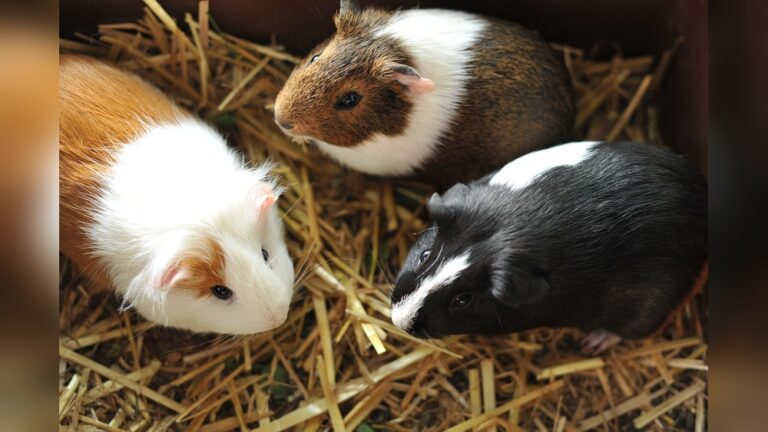How Much Is A Capybara: Ultimate Guide to Cost & Care Tips
Have you ever wondered how much a capybara costs? If you’re thinking about adding one of these gentle giants to your home or just curious about their price, you’re in the right place.
Knowing the cost is more than just a number—it helps you plan for their care, space, and happiness. Keep reading, and you’ll discover everything you need to know about the price of capybaras and what comes with owning one. This way, you can make the best choice for you and your new furry friend.

Credit: www.houstonzoo.org
Capybara Price Range
Capybaras are unique pets that attract attention for their gentle nature and size. Understanding their price range helps potential owners prepare well. Prices can vary widely based on several factors. Knowing these details makes the buying process smoother.
Factors Influencing Cost
Age plays a big role in the price of a capybara. Younger capybaras often cost more due to higher demand. Health status also affects the price. A healthy capybara with veterinary checks will be pricier. Breeder reputation matters too. Well-known breeders charge more for their animals.
Price Variations By Location
Location impacts capybara prices a lot. In countries where capybaras are common, prices are lower. In places where they are rare, costs rise. Shipping and transportation add to the expense. Local laws and permits can also affect the total cost.
Average Cost Breakdown
The average price for a capybara ranges from $800 to $3,000. Younger and healthy capybaras are near the higher end. Additional costs include habitat setup, food, and vet visits. These expenses add up quickly. Budgeting beyond the purchase price is important.
Initial Expenses
Getting a capybara means planning for initial costs carefully. These expenses cover everything to keep your pet safe and happy. Understanding these costs helps you prepare well for your new companion.
Habitat Setup
Capybaras need a spacious, secure area to live. They love water, so a pool or pond is important. Building a safe habitat can cost between $500 and $1,500. This includes fencing, shelter, and a water feature. Proper setup keeps capybaras healthy and comfortable.
Essential Supplies
Capybaras require specific supplies daily. You need food dishes, bedding, and grooming tools. Fresh hay and vegetables are part of their diet. These supplies may cost $100 to $300 at first. Buying quality items ensures your pet’s well-being.
Health Checkups
Initial vet visits are crucial for a new capybara. They need vaccinations and a full health check. Vet fees usually range from $100 to $250. Early health care prevents future problems. Regular checkups keep your capybara strong and happy.
Ongoing Care Costs
Owning a capybara involves more than just the initial purchase price. You must plan for ongoing care costs. These costs keep your pet healthy and happy. Understanding these expenses helps you prepare better for life with a capybara.
Diet And Nutrition
Capybaras need fresh vegetables, grasses, and fruits daily. They eat mostly hay and grass. Fresh water must be available all the time. Special pellets for rodents can add nutrition. Feeding a capybara can cost around $20 to $40 monthly. Proper diet prevents health problems and keeps them active.
Veterinary Care
Regular vet visits are essential for capybaras. Vaccinations and parasite control protect them from diseases. Expect to pay $100 or more yearly for routine care. Emergency visits can cost much more. Finding a vet experienced with exotic pets is important. Early health checks save money and stress later.
Maintenance And Cleaning
Capybaras need a clean living space. Daily cleaning of their enclosure is necessary. Bedding and water areas require frequent refreshment. Cleaning supplies add to monthly expenses. Proper hygiene prevents infections and odor. A clean environment helps your capybara stay comfortable and safe.
Capybara Behavior And Temperament
Capybaras are gentle and calm animals. Their behavior and temperament make them unique pets. Understanding how they act helps in caring for them properly. Capybaras need special attention to thrive in a home setting. They live well in groups and enjoy social interactions.
Social Needs
Capybaras are very social creatures. They live in groups in the wild. Loneliness can cause stress and sadness. They need friends to stay happy and healthy. Keeping more than one capybara is best. Social time helps them feel safe and relaxed.
Interaction With Humans
Capybaras can bond with humans. They like gentle petting and calm voices. Sudden movements may scare them. Patience is key to earn their trust. They enjoy spending quiet time with people. Regular contact helps them get used to humans.
Compatibility With Other Pets
Capybaras often get along with other animals. They are peaceful and not aggressive. Small pets like rabbits or birds can live nearby. Dogs and cats should be calm and friendly. Supervision is important when introducing new pets. Careful introductions help build good relationships.
Housing Requirements
Housing a capybara requires careful thought. These gentle creatures need a specific setup to stay happy and healthy. Proper housing is key to their well-being. It must meet their natural habits and needs.
Space And Environment
Capybaras need plenty of space to move around. A large, secure outdoor area works best. The space should mimic their natural habitat with grass and shade. They enjoy digging and grazing. Keep the ground soft and clean. Avoid tight or crowded places. A small area can stress them out.
Water Access
Water is essential for capybaras. They spend much time swimming and soaking. Provide a pond or large pool for them to enter easily. The water should be clean and fresh daily. This helps keep their skin and fur healthy. It also cools them in hot weather. Without water, capybaras become unhappy and unhealthy.
Safety Measures
Safety is a must for capybara housing. Use strong fencing to keep them safe from predators. The fence should be high enough to prevent escapes. Avoid sharp objects or harmful plants nearby. Check the area regularly for hazards. Make sure no dangerous animals can enter. A safe home reduces stress and prevents injuries.

Credit: www.awsfzoo.com
Feeding Guidelines
Feeding a capybara properly is key to keeping it healthy and happy. Their diet must meet their unique needs. Knowing what to feed and when helps prevent health problems. This section explains how to feed your capybara well.
Diet Components
Capybaras eat mostly plants. Fresh grass makes up most of their diet. Hay is also important. It helps digestion and wears down their teeth. Vegetables like carrots, sweet potatoes, and leafy greens add nutrients. Fruits like apples or melons can be treats, but only in small amounts.
Feeding Schedule
Feed your capybara twice a day. Morning and evening work best. Give fresh hay every day. Add fresh vegetables during meals. Provide clean water at all times. Avoid sudden diet changes. Keep feeding times consistent to reduce stress.
Foods To Avoid
Avoid sugary and processed foods. These can harm your capybara’s health. Do not feed them bread or junk food. Some plants like avocado and rhubarb are toxic. Chocolate and caffeine are dangerous too. Stick to natural, safe foods only.
Health And Wellness Tips
Caring for a capybara means focusing on its health and wellness. These large rodents need special attention to stay happy and strong. Understanding their common health problems, preventive care, and signs of illness helps owners provide the best care possible.
Common Health Issues
Capybaras often face skin infections, especially if their habitat is wet or dirty. They can develop parasites like ticks and fleas. Dental problems are common because their teeth grow constantly. Digestive issues may occur if their diet lacks fiber. Regular check-ups can catch these problems early.
Preventive Care
Keep the capybara’s living area clean and dry to prevent infections. Provide fresh water daily and a diet rich in grasses and vegetables. Regular grooming removes dirt and parasites. Vaccinations and worm treatments protect against diseases. Exercise helps maintain their health and reduces stress.
Signs Of Illness
Watch for changes in eating or drinking habits. Lethargy or unusual hiding may signal sickness. Look for swollen joints or difficulty moving. Unusual droppings or diarrhea indicate digestive problems. Early detection of these signs helps prompt treatment and faster recovery.

Credit: www.pbs.org
Legal Considerations
Before buying a capybara, understanding legal rules is very important. These rules protect both the animal and the owner. Laws vary by country, state, and city. Knowing these rules helps avoid trouble and keeps your pet safe.
Ownership Regulations
Many places have specific laws about owning capybaras. Some allow it with no limits. Others ban capybaras completely. Some regions allow ownership but have strict rules. Check local laws before deciding to buy one.
Permits And Licenses
Some areas require permits or licenses to keep a capybara. These documents prove you follow safety and care rules. The process usually involves paperwork and fees. Without proper permits, owning a capybara can lead to fines or animal confiscation.
Ethical Ownership
Owning a capybara means responsibility. These animals need space, water, and social interaction. Ethical owners provide proper care and respect the animal’s needs. Consider the capybara’s welfare before making a purchase.
Tips For First-time Owners
Owning a capybara can be a unique and rewarding experience. These gentle creatures need special care. First-time owners must prepare carefully to ensure the capybara feels safe and happy. Understanding their needs helps avoid common mistakes. Here are some tips to help new capybara owners create a good environment for their pet.
Preparing Your Home
Capybaras need space to roam and explore. Clear an area in your yard or home for them. Make sure the space is safe and secure. Provide access to water, as capybaras love swimming. Use a shallow pool or pond for this purpose. Remove any harmful plants or objects from their area. Capybaras also need a shaded spot to rest. Keep their living area clean to prevent illness.
Building A Routine
Capybaras thrive on routine. Feed them at the same times every day. Their diet should include fresh vegetables and grass. Provide fresh water daily. Spend time with your pet to build trust and friendship. Regular play and exercise keep them healthy and happy. Establish a quiet time for rest each day. Consistency helps reduce stress for your capybara.
Resources And Support
Learn from experienced capybara owners and experts. Join online groups or local clubs for advice. Read books and watch videos about capybara care. Find a veterinarian familiar with exotic pets. Regular health checks are important. Keep emergency contacts handy in case of illness. Support networks help you care better for your capybara.
How Smart Pets Lover Can Help You with How Much Is A Capybara
Turning Curiosity About Capybara Costs Into Meaningful Learning
Understanding “How Much Is A Capybara” isn’t just about numbers—it opens doors to practical insights that every prospective pet parent should embrace. Beyond the initial price tag, diving into ongoing care costs and housing requirements reveals the true commitment behind owning these gentle giants. It’s one thing to know the price; it’s another to appreciate the behavior, feeding guidelines, and health needs that shape a capybara’s well-being.
At Smart Pets Lover, where every wag, purr, and chirp tells a story, we believe informed decisions come from blending cost awareness with heartfelt care. Learning about legal considerations and temperament helps build a foundation of responsible ownership, especially for first-time owners navigating this unique pet journey.
- Review your local regulations before making any commitments.
- Explore housing setups that mimic natural habitats to keep your capybara happy.
- Factor in feeding and wellness routines as ongoing investments.
If questions arise while you explore capybara care, reaching out to experienced pet communities or local animal welfare organizations can provide valuable guidance. Remember, smart choices create confident, connected pet parents—just as we aim to support here at Smart Pets Lover.
Frequently Asked Questions
How Much Does A Pet Capybara Cost?
A pet capybara typically costs between $1,000 and $3,000. Prices vary based on breeder, location, and age. Additional expenses include habitat setup and ongoing care.
Are Capybaras Expensive To Care For?
Yes, capybaras require a proper diet, space, and veterinary care. Monthly costs can add up, making them moderately expensive pets.
Where Can I Buy A Capybara Legally?
You can buy capybaras from licensed breeders or exotic pet sellers. Always check local laws and permits before purchasing.
What Factors Affect The Price Of A Capybara?
Price depends on age, health, breeder reputation, and location. Rare or trained capybaras may cost more.
Conclusion
Capybaras cost varies based on location and care needs. Owning one means time, space, and money. They are social and need attention daily. Think about expenses for food, vet visits, and habitat. These animals can be great pets but require commitment.
Make sure you understand what caring for a capybara involves. This helps you give them a happy, healthy life. Choose wisely before bringing a capybara home.





